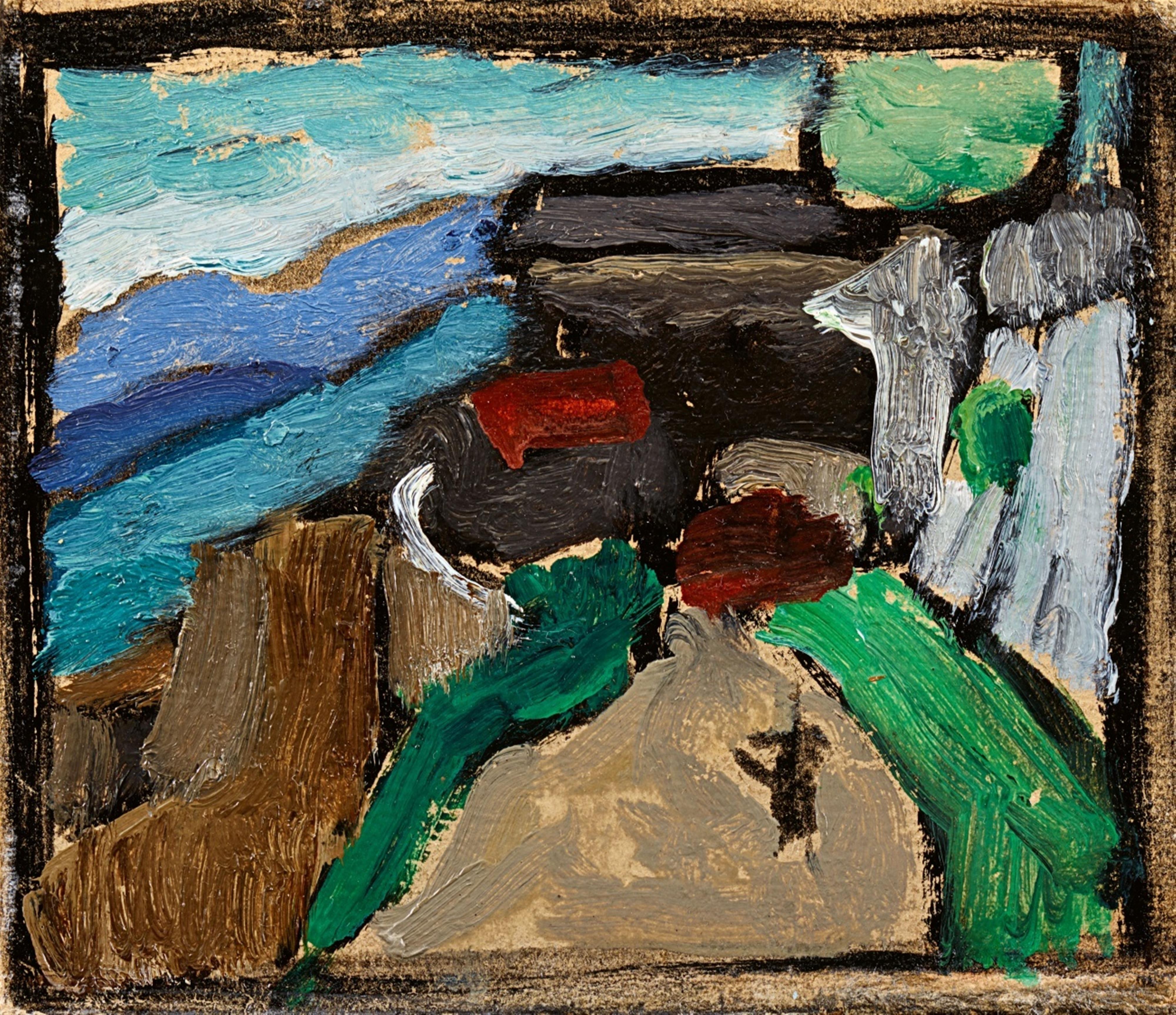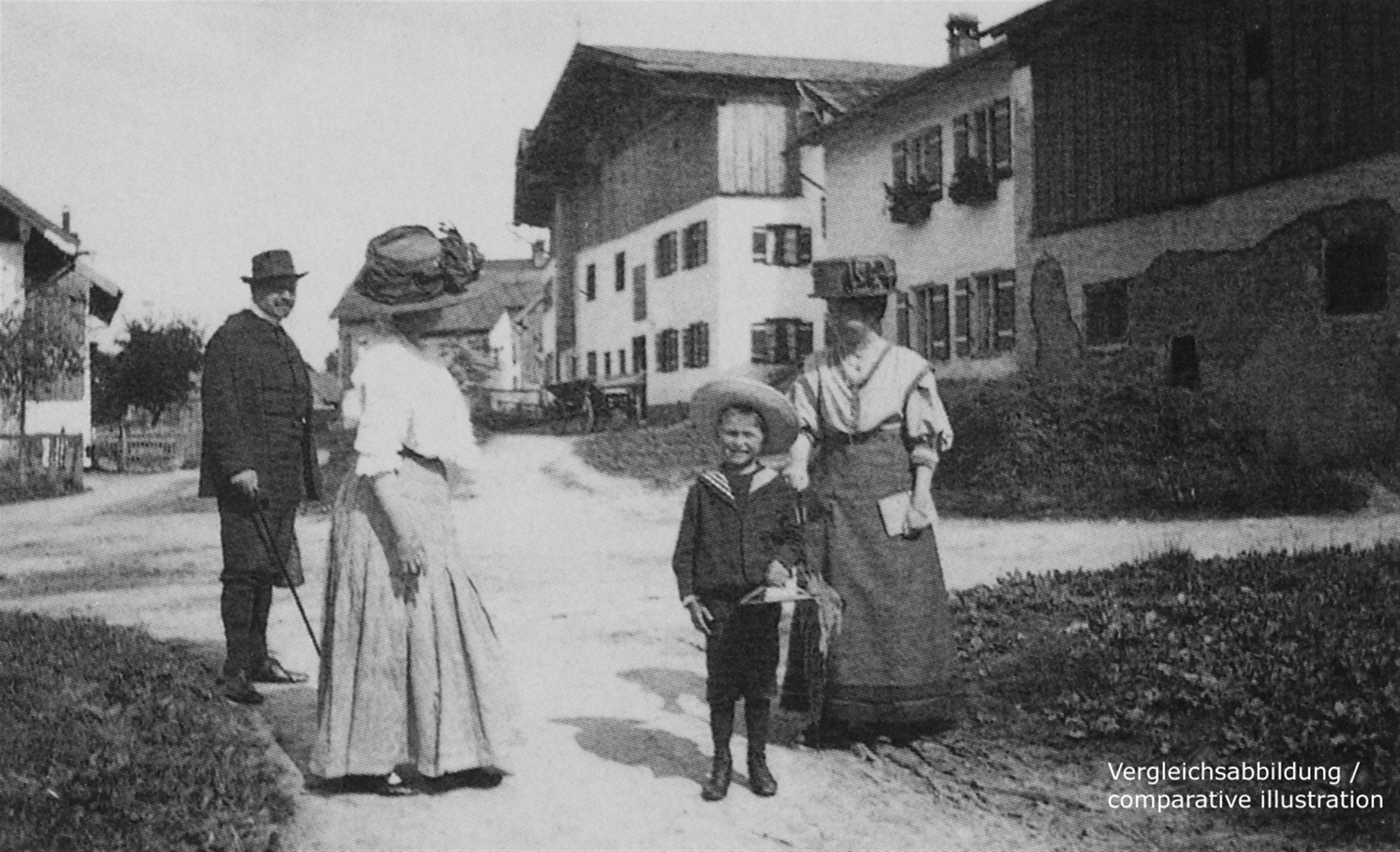Gabriele Münter
Landschaftsstudie (Landschaft mit Spaziergänger)
Circa 1912
Oil on artist's board 14 x 16.1 cm Framed under glass. On the verso, Münter's work number ' L 457 ' on a label and stamped "GABRIELE MÜNTER NACHLASS" below. - In fine condition.
“Striving for artistic synthesis” in the Oberland region of Bavaria? Gabriele Münter was extremely succinct in recording this view from a window above the paved road leading between the facades of the houses before her. The painter has used only a few details to capture her motif in Murnau am Staffelsee: street, facades, mountains, sky. Münter immerses the scene in tones of blue and brown and green; the bold, sparingly applied red brings order to the composition. For Gabriele Münter these were the colours of the year 1910. We encounter them in views of local topographies, the village of Murnau and the surrounding area seen with a gaze in which colours become almost nonobjective colour-forms, which the artist subsequently combined into her characteristic motifs. Something amazing happened in Murnau in the autumn of 1908 when Wassily Kandinsky, Gabriele Münter, Alexej von Jawlensky and Marianne von Werefkin met and painted in this Upper Bavarian village after long stays mostly in Italy and France: an artistic revolution, a radical departure from an Impressionist and late Impressionist style of painting and a turn towards a synthetic, expressive painting of colours. “We had seen Murnau during an outing and recommended it to Jawlensky and Werefkin - who then called us to join them there in the autumn. We lived in the Griesbräu [inn] and were very pleased. There, after a short period of agony, I made a giant leap - from painting after nature - more or less impressionistically - to feeling a content - to abstracting - to providing an extract.” (cited in: Der Blaue Reiter, Dokumente einer geistigen Bewegung, ed. by Andreas Hüneke, Leipzig 1989, p. 5).
By increasingly restricting herself to a few characteristic details of the village and the landscapes surrounding it, Gabriele Münter sought radical possibilities for individually reshaping what she saw, and she arrived at this exciting composition of colours: houses, trees and mountains manifest themselves in the form of homogeneously painted surfaces framed by coloured contours. The colours are newly mixed in daring nuances between red and blue, entirely in the sense of Kandinsky, who summed things up in the circular letter from January 1909 regarding the founding of the “Neue Künstlervereinigung München”, demanding a search for artistic forms “which have to be liberated from all incidental aspects, in order to provide a strong expression solely of what is necessary - in short - the striving for artistic synthesis […].” (Wassily Kandinsky, Streben nach künstlerischer Synthese, in: Kat. zur ersten Ausstellung der Neuen Künstlervereinigung in der Galerie Thannhauser, 1909).
Certificate
The work is listed in the estate under the number L 457. It will be included in the forthcoming catalogue raisonné of paintings by Gabriele Münter, compiled by the Gabriele Münter- und Johannes Eichner Stiftung.
Provenance
Galerie Gunzenhauser, Munich; Frankfurter Kunstkabinett Hanna Bekker vom Rath, Frankfurt/Main (1974), Private collection, West Germany
Exhibitions
Frankfurt/Main 1974 (Kunstkabinett Hanna Bekker vom Rath), Gabriele Münter 1877-1962 - 30 Gemälde aus den Jahren 1906 bis 1959, cat. no. 10 (exhibition label verso)




